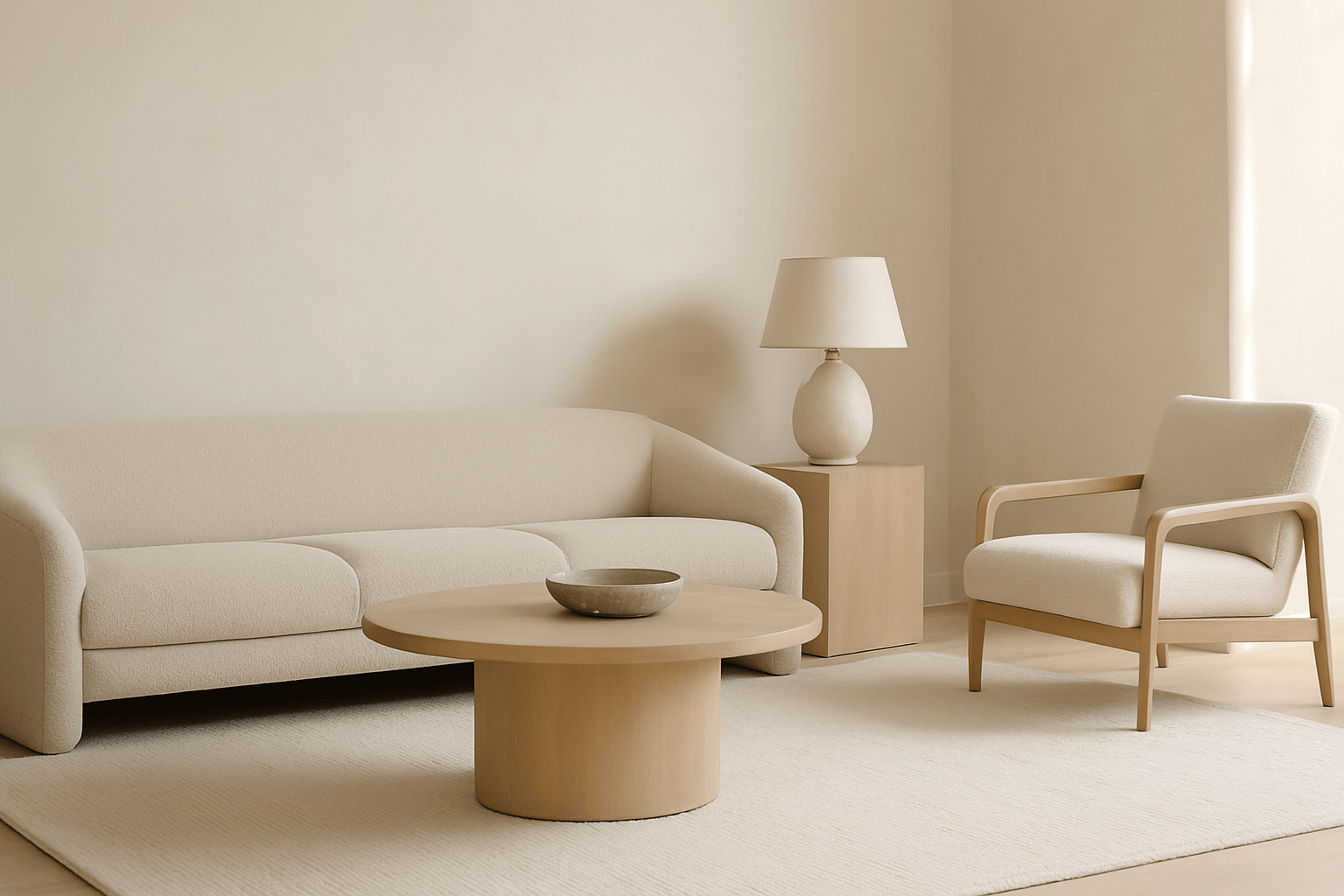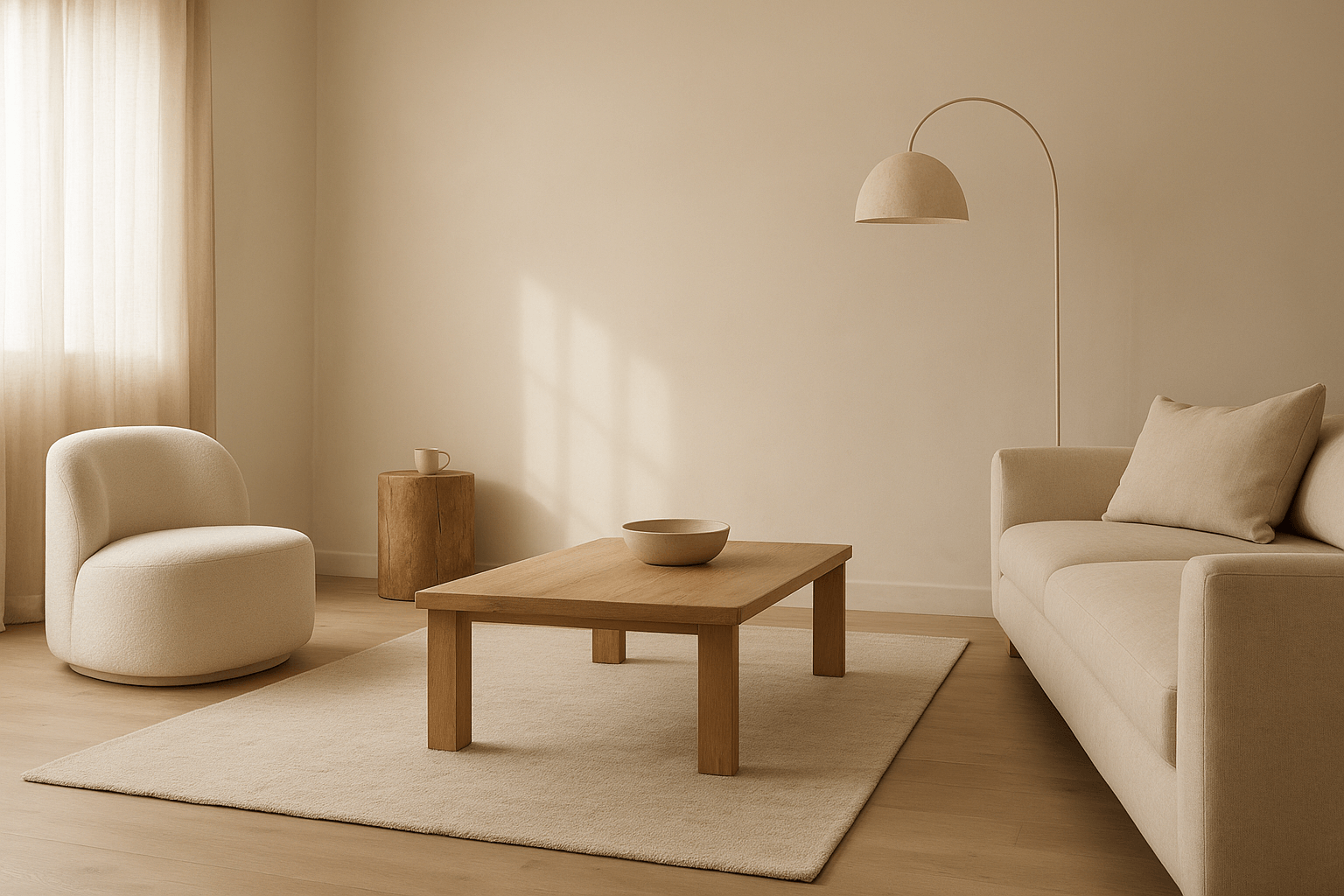Can Minimalist Spaces Have a “Center”?
Absolutely. A minimalist room doesn’t need to be flat or featureless to feel calm. In fact, one of the most powerful ways to elevate a minimalist interior is through a well-placed focal point.
Think of it as a gentle anchor—something your eye lands on, something that creates structure and mood without shouting.
In minimalism, focal points don’t demand attention. They guide it.
Why Focal Points Matter in Minimalist Design
-
Add quiet depth to neutral spaces
-
Prevent visual monotony
-
Offer balance and grounding
-
Help define layout and flow
A focal point in a minimalist room isn’t about complexity—it’s about clarity.
What Can Be a Focal Point?
1. A Sculptural Light Fixture
Pendant lights, wall sconces, or table lamps with form and intention can softly anchor the room.
2. A Textural Object
A handmade ceramic bowl. A travertine sculpture. A stone bench. Something tactile and grounded.
3. An Accent Wall in Material, Not Color
Use wood paneling, raw plaster, or limewash to add dimension without disrupting neutrality.
4. A Statement Chair or Sofa
Choose a form that feels architectural. Think gentle curves or grounded block shapes in natural fabrics.
5. A Large Piece of Art—or the Absence of One
A single oversized canvas, or even a blank wall framed by calm symmetry, can draw the eye with intention.
How to Use Focal Points Without Breaking Minimalism
1. Use One
In most cases, one strong focal point per space is enough. Let it do its job without competition.
2. Let the Rest Support It
Everything else should retreat slightly in tone, texture, or form. This creates harmony and respect for space.
3. Embrace Asymmetry
Focal points can be off-center. In fact, slight imbalance often adds beauty to minimalism.
4. Consider Function
A focal point should be more than just a visual feature—it can also be the most useful piece in the room.
5. Light It Gently
Soft lighting around a focal point enhances its presence without turning it into a performance.
Final Thoughts
Minimalist interiors aren’t about absence—they’re about focus. A well-placed focal point can ground a room emotionally, giving it rhythm and energy without compromising calm.
Let your space have a center. Just make sure it whispers—not shouts.
















